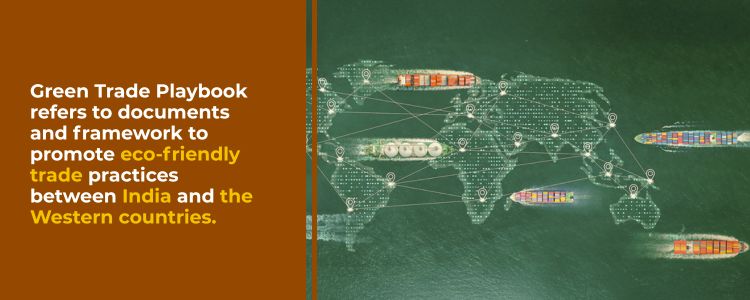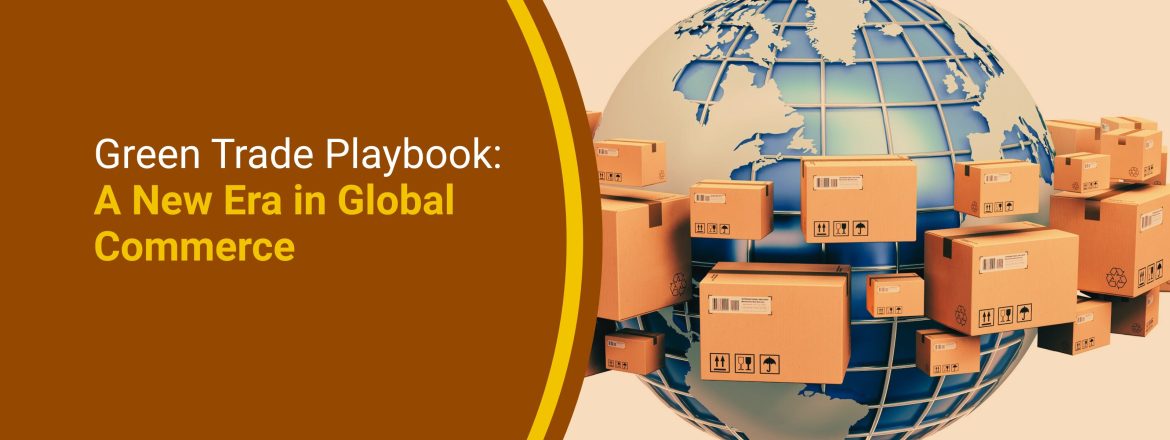Green Trade Playbook: The Rise of Climate-Aligned Commerce
The regulations governing international trade are changing significantly with the pressing effects of climate change. Economic expansion at the price of the planet’s health is no longer acceptable. The new norm is business and climate goals coexisting. Governments, corporations, and consumers are realizing the importance of sustainable trade, and there is a movement known as Climate-Aligned Trade. An extension of this is the Green Trade Playbook, which offers advice on how to rethink trade laws, supply networks, and economic tactics to fit with a sustainable, low-carbon future.
Eco-friendly businesses are initiating a potent force to reshape international trade in respect to global sustainability. A new shift is now taking shape, one in which economic success and environmental responsibility are combined, rather than before, when economic efficiency was given more importance than environmental sustainability.
Green Trade Strategy, which was introduced in June 2022, outlines how the agency will fight climate change within the framework of its trade mission. The strategy strengthens current enforcement efforts against environmental trade crimes, such as illegal mining, wildlife trafficking, illegal logging, illegal, unreported, and unregulated fishing, and other violations of environmental laws and regulations, while establishing a proactive model to counteract the detrimental effects of climate change and environmental degradation on the agency’s trade mission.
What Is the Green Trade Playbook?
The Green Trade Playbook provides a framework for including sustainability in international trade, supply chains, and policymaking. It serves as a road map for how governments and corporations can go from intention to action in order to incorporate trade into the climate solution. It is a manual that comprises environmental concerns into the regulations of international trade and is at the center of this change. It supports green finance through climate-forward trade agreements; it cleans up supply chains, encourages the adoption of low-carbon technologies, and builds global collaboration.

It is a guide for government and trade associations to match their business operations with environmental concerns. It consists of regulations, ideas, and tactics that work together to promote sustainable trade. It promotes innovation and economic expansion, resource extraction, and transportation. Here are a few of its essential elements:
- Adjustments to the Carbon Border: In an effort to level the playing field between local sectors that must attach to environmental standards and actively investigate carbon border adjustment mechanisms.
- Ecological Supply Chains: To lower emissions, climate-aligned business models promote the use of renewable energy, effective logistics, and the concepts of the circular economy.
- Agreements on Green Trade: New trade deals could encourage tariff reductions for low-carbon commodities, enable the trade of environmental services, or establish common sustainability standards.
- Clean Technology Incentives: Governments should provide incentives for the import or export of electric cars, renewable energy equipment, and other climate-friendly technologies to promote global decarbonization.
- Investment and Finance Associated with Climate Change: Investment funds, export credit organizations, and multilateral banks are linking their backing to environmental indicators. Businesses are being pushed to include climate risk into their operations as trade finance instruments increasingly take ESG (Environmental, Social, and Governance) regulations into account.
Challenges and Solutions
GTP is not a formal document. Making the shift to a climate-aligned business model is full of difficulties, but it is necessary, so there should be a risk of being excluded from international markets if any company is unable to coordinate with new environmental regulations.
Climate finance, fair transition plans, and capacity-building programs must all be included in the green trade equation to solve these problems. Inclusivity, equity, and transparency are crucial to guarantee the advantages of climate-aligned business.
Conclusion
It is estimated by the World Trade Organization (WTO) that 20–30% of global greenhouse gas (GHG) emissions are caused by international trade. So, the Green Trade Playbook offers a road map for transforming cross-border trade in goods and services, with sustainability ingrained at every stage. It is an appeal to governments to encourage innovation for companies.
Are you planning to implement operations that will address environmental concerns for your business? So, let’s take a step for the environment, and Inductus Global is here to help you out. We help with sustainable sourcing and eco-friendly logistics to help you stay on top of climate-aligned commerce in 2025 and beyond.









